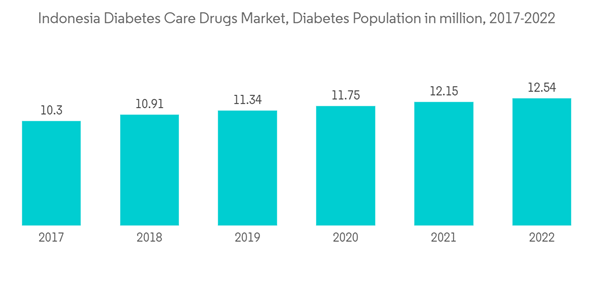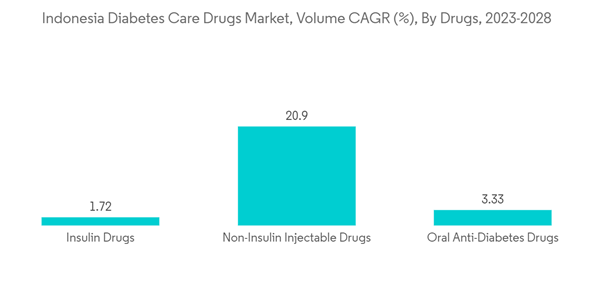Inequality in the management of diabetes in Indonesia existed before the COVID-19 pandemic. The gap in health literacy was a major factor in the disparity in managing chronic diseases. The Pandemic brought about more challenges to pre-existing conditions. Diabetes was one of the most common factors linked to COVID-19; consistent evidence suggested that diabetes increased the risk of COVID-19. Higher blood glucose levels were associated with the worst COVID-19 outcomes. Tight control of glucose levels proved crucial in patients with diabetes mellitus to prevent progression to severe COVID-19. Therefore, improving the management of diabetes during the Pandemic became important by improving health literacy and providing adequate access.
Diabetic drugs are medicines developed to stabilize and control blood glucose levels among people with diabetes. Diabetic drugs are commonly used to manage diabetes. Several classes of diabetes medicines exist. Each class of medicine has a different mechanism of action to lower blood sugar. A drug may work by causing the pancreas to make and release more insulin, limiting the liver's ability to make and release sugar, blocking the action of enzymes in the intestines that break down carbohydrates, improving cells' sensitivity to insulin, limiting the kidneys' ability to take in sugar, which increases the amount of sugar leaving the body in urine, etc.
Indonesian Diabetes Association and the Ministry of Health Indonesia are actively collaborating with the Indonesian local governments and diabetes care product manufacturers to remain available for all Indonesians. The rising number of people with diabetes implies an increased burden of the disease and its complications, such as heart disease, stroke, blindness, chronic kidney disease, and lower limb amputation. These result in reduced quality of life and higher healthcare costs, leading to a greater need for access to care.
Therefore, owing to the factors above, the studied market is anticipated to grow over the analysis period.
Indonesia Diabetes Care Drugs Market Trends
The Oral anti-diabetic drugs segment holds the highest market share in the Indonesia Diabetes Care Drugs Market in the current year
The Oral antidiabetic drugs segment holds the highest market share in the Indonesia Diabetes Care Drugs Market this year. It is expected to register a CAGR of about 4.3% over the forecast period.Oral Antidiabetic Drugs have been available internationally and are recommended for use when escalation of treatment for type-2 diabetes is required along with lifestyle management. Oral agents are typically the first medications used in treating type-2 diabetes due to their wide range of efficacy, safety, and mechanisms of action. Antidiabetic drugs help diabetes patients control their condition and lower the risk of diabetes complications. People with diabetes may need to take antidiabetic drugs for their whole lives to control their blood glucose levels and avoid hypoglycemia and hyperglycemia. Oral antidiabetic agents present the advantages of easier management and lower cost, so they became an attractive alternative to insulin with better acceptance, which enhances adherence to the treatment.
Indonesia has the seventh-largest number of people living with diabetes worldwide. Indonesia is a lower-middle-income country struggling with the double burden of communicable and non-communicable diseases. Since the past decade, there has been a rise in diabetes. Diabetes is estimated to be among the higher premature mortality causes in Southeast Asia after stroke and coronary heart disease. A person with poor health literacy has a poor health status as well. Therefore, good health literacy is needed by people with diabetes to manage their health and make the right health decisions to achieve favorable disease outcomes. In Indonesia, people's health is primarily covered by national government insurance. Government insurance covers medical requirements such as consultation, hospitalization, insulin, and needles through designated clinics, hospitals, and licensed pharmacies.
Owing to the above factors, the market will likely continue to grow.
The Sodium-dependent Glucose Cotransporter 2 (SGLT-2) Segment is expected to register the highest CAGR in the Indonesia Diabetes Care Drugs Market over the forecast period
The Sodium-dependent Glucose Cotransporter 2 (SGLT-2) Segment is expected to register the highest CAGR of about 8.7% in the Indonesia Diabetes Care Drugs Market over the forecast period.SGLT-2 inhibitors, or gliflozins, are a medicine to lower high blood glucose levels in people with type-2 diabetes. SGLT-2 inhibitors act independently of beta-cell function in the pancreas. SGLT-2 drugs significantly manage cardiovascular risk factors, including blood pressure, cardiac function, and antiinflammatory activity. SGLT-2 inhibitors are effective at lowering hemoglobin A1c levels and improving weight loss. They have a low risk of hypoglycemia and are usually well tolerated.
Jardiance is a prescription medicine to lower blood sugar, diet, and exercise in adults with type-2 diabetes. It reduces the risk of cardiovascular death in adults with type-2 diabetes who have known cardiovascular disease. Jardiance also reduces the risk of cardiovascular death and hospitalization for heart failure in adults with heart failure, when the heart cannot pump enough blood to the rest of the body. It is not for people with type-1 diabetes.
Diabetes care focuses on secondary and tertiary levels, while primary care services are sub-optimal, lacking expertise, diagnostic equipment, and drug availability. This condition is exacerbated by inequality in the management of diabetes, with people in remote areas having impoverished access. The Indonesia Ministry of Health made PROLANIS (Program Layanan Penyakit Kronis or chronic disease care program), focusing on diabetes self-management in primary care. It was provided for all patients under the national health insurance scheme to improve the devastating condition.
Such factors are expected to boost market growth.
Indonesia Diabetes Care Drugs Industry Overview
The Indonesian Diabetes Care Drugs Market is moderately consolidated, with major manufacturers, namely Eli Lilly, Sanofi, Novo Nordisk, AstraZeneca, and other regional generic players. The market for oral drugs, like Sulfonylureas and Meglitinides, comprises more generic players.Additional Benefits:
- The market estimate (ME) sheet in Excel format
- 3 months of analyst support
This product will be delivered within 2 business days.










